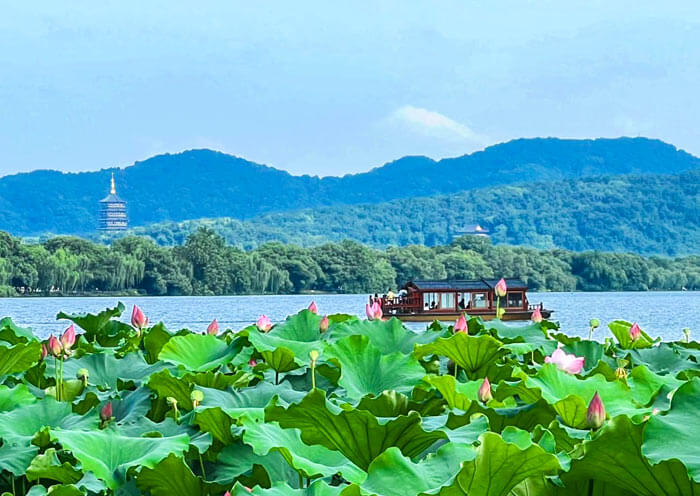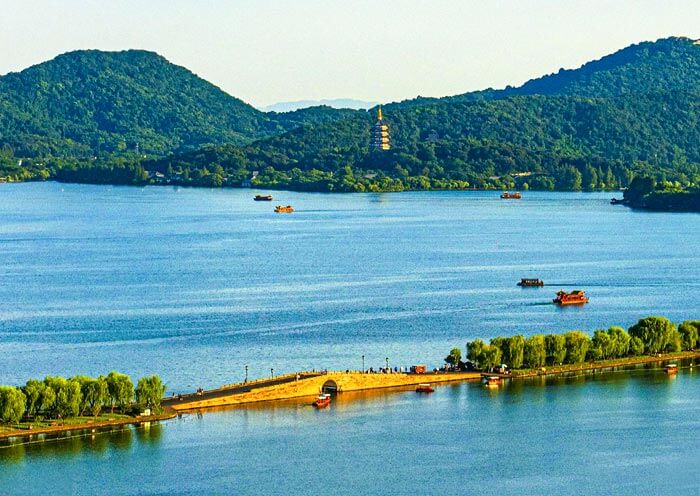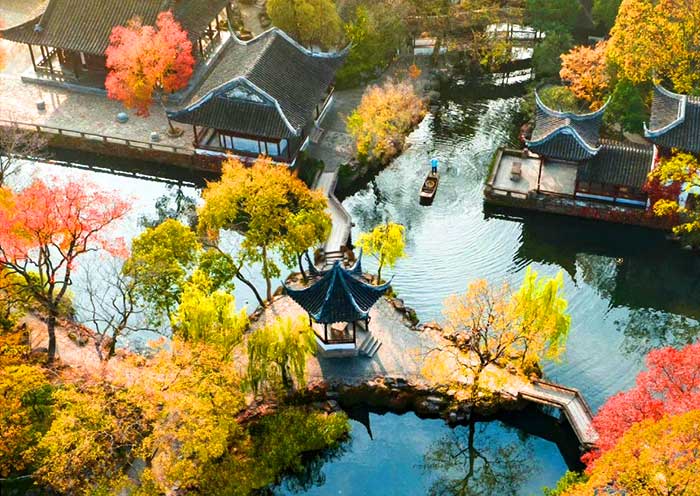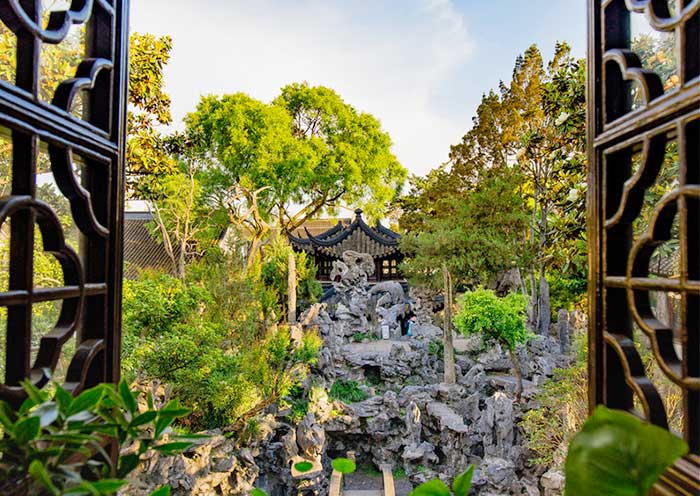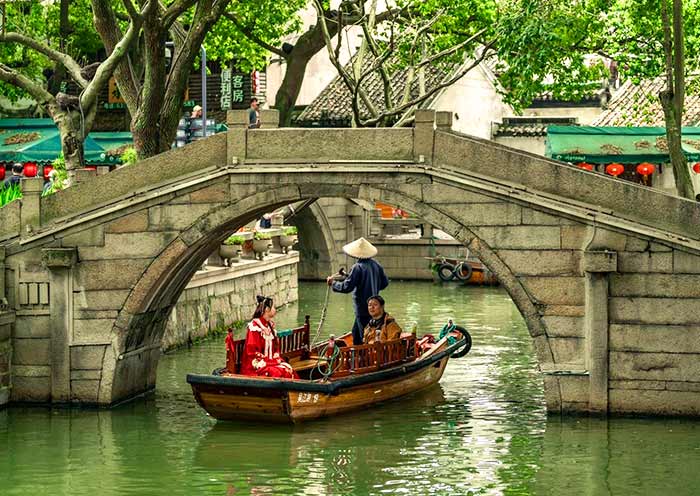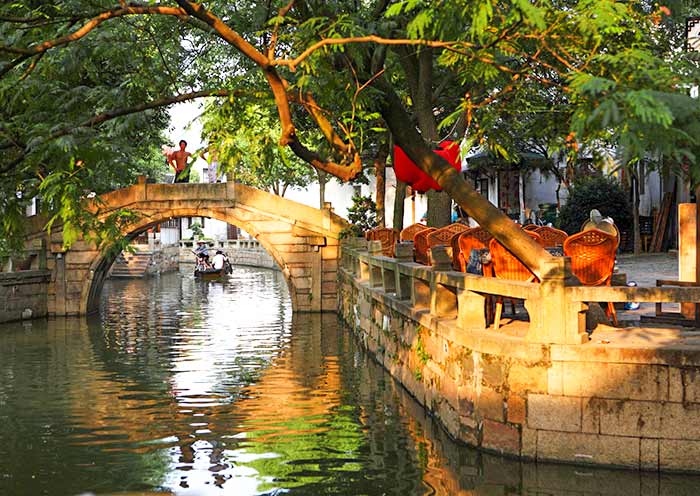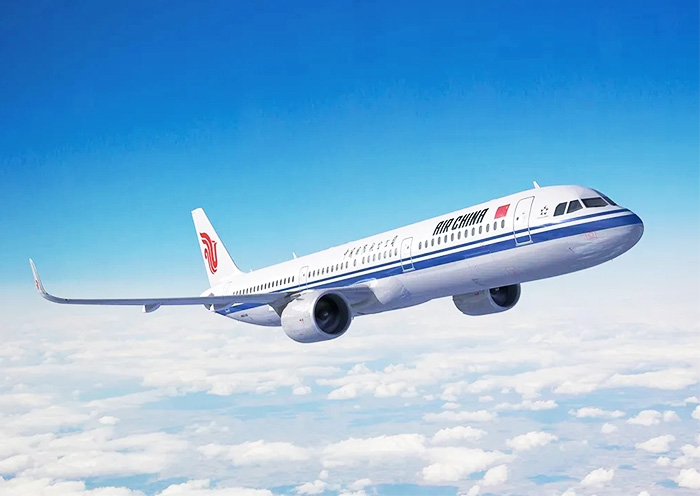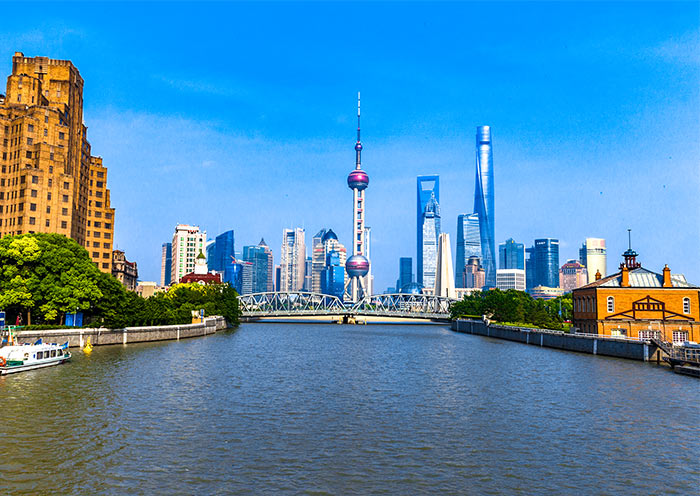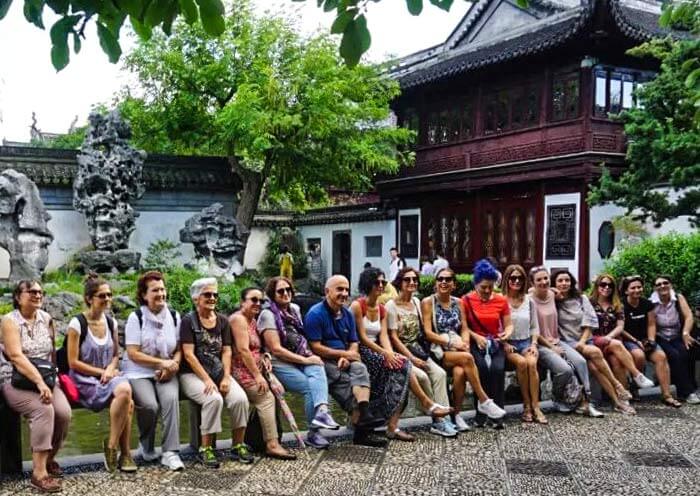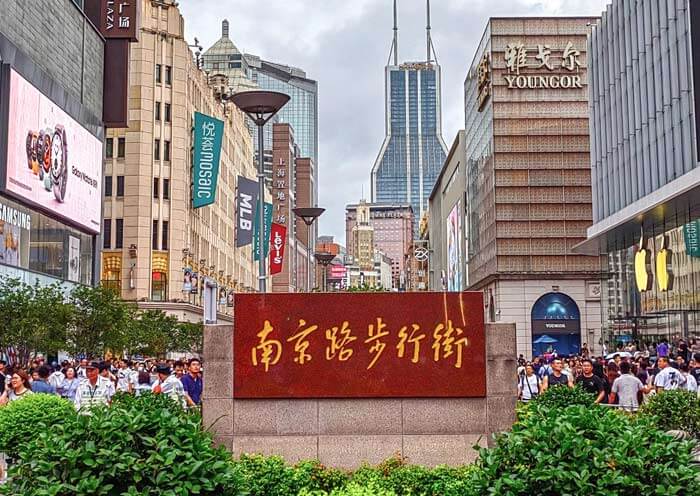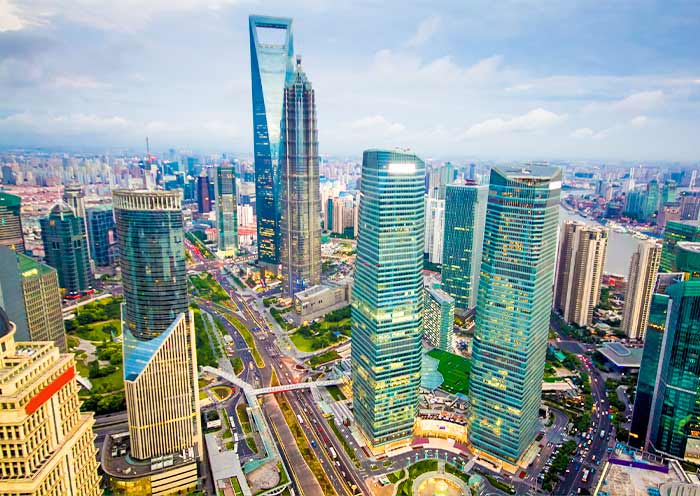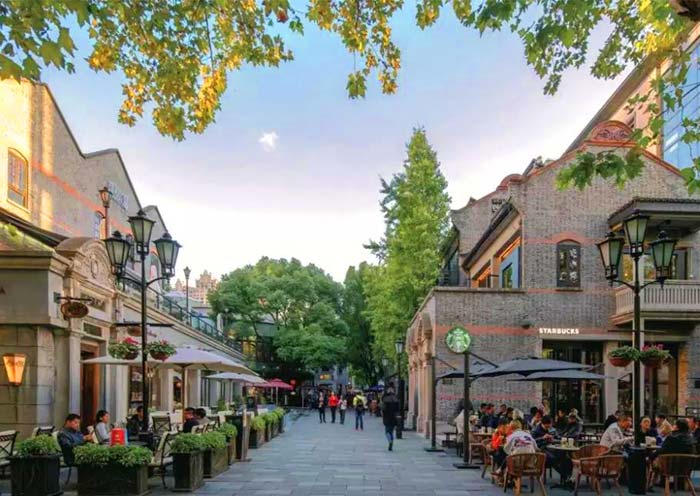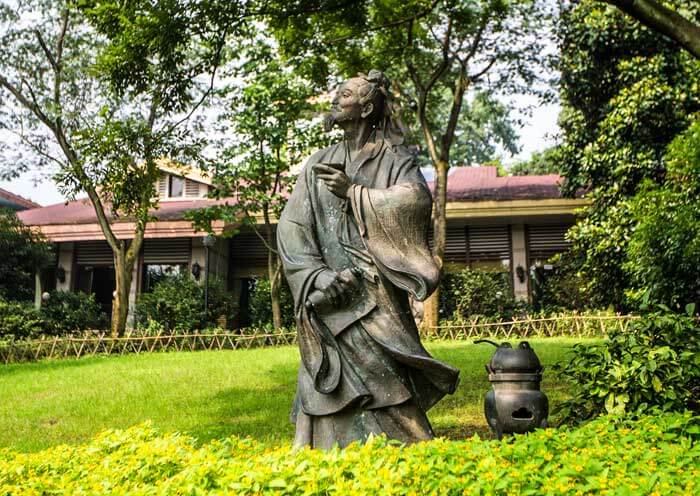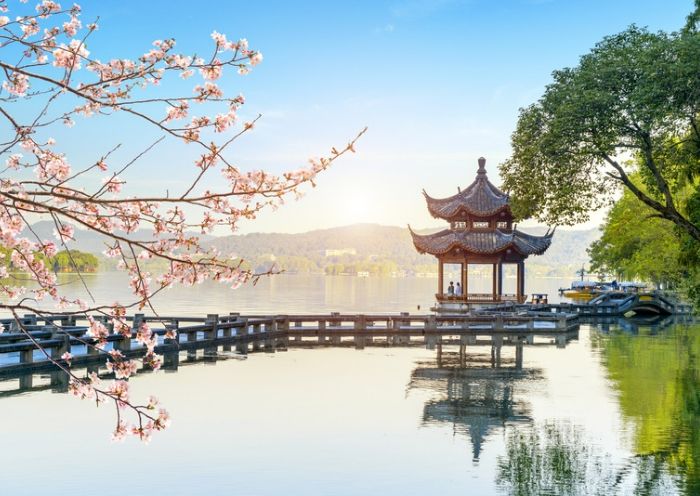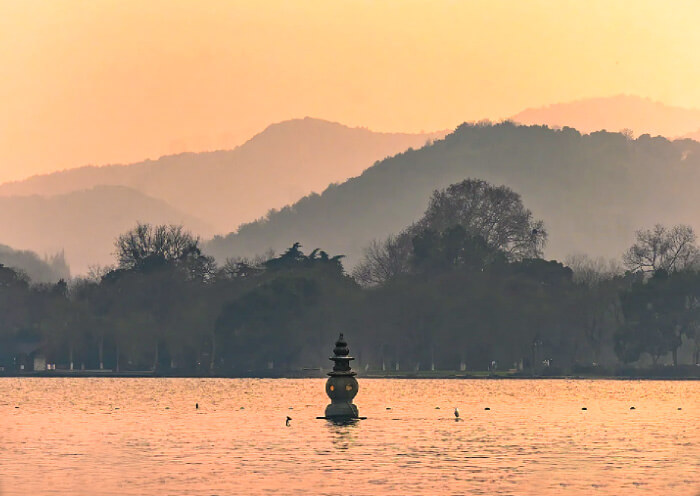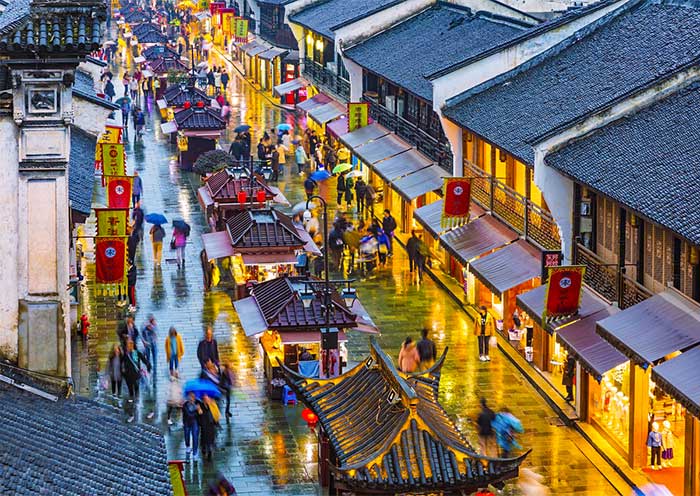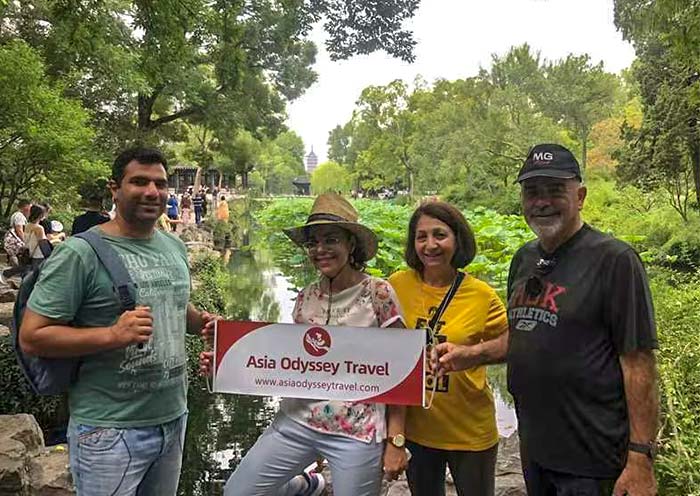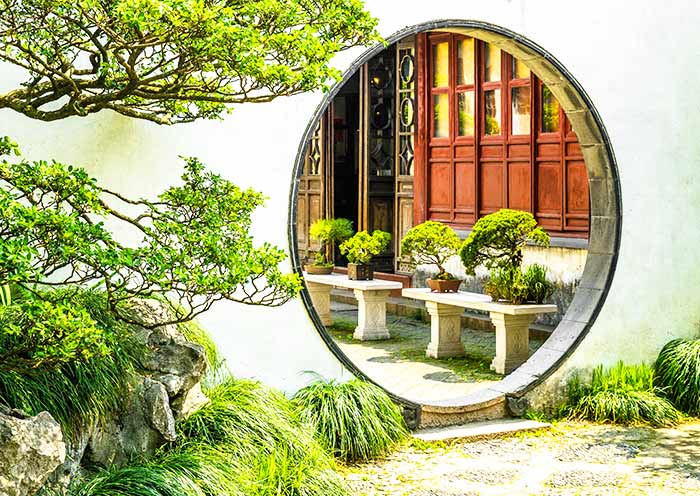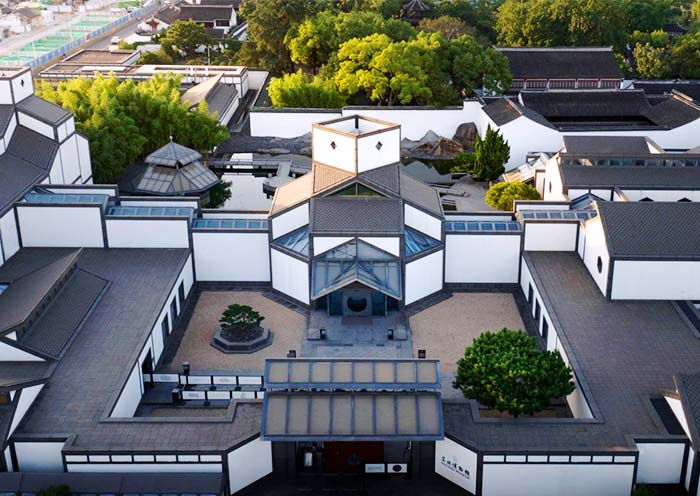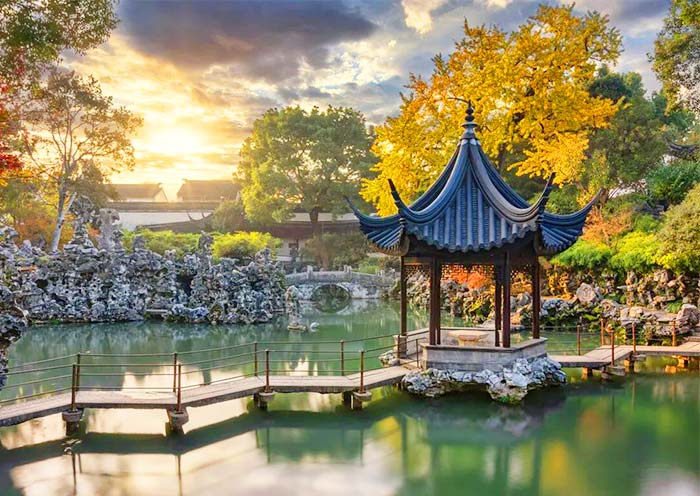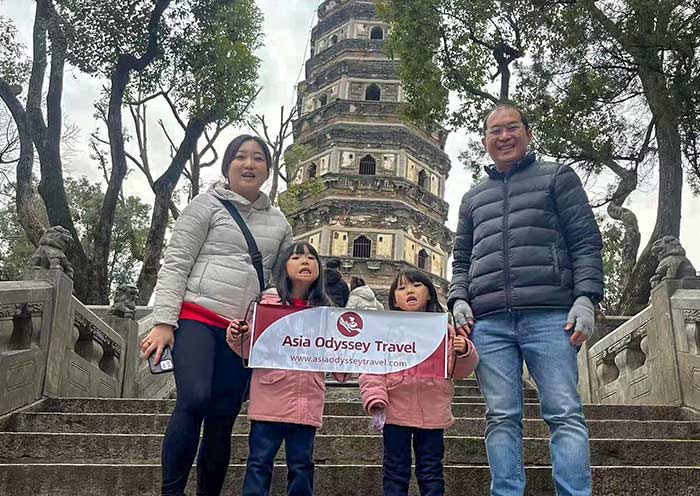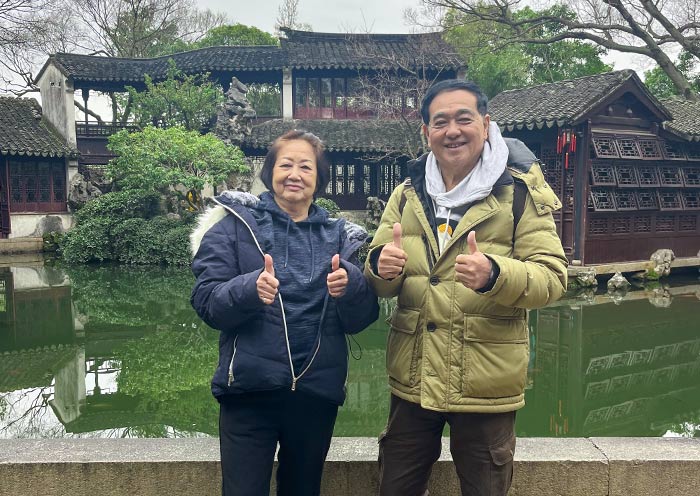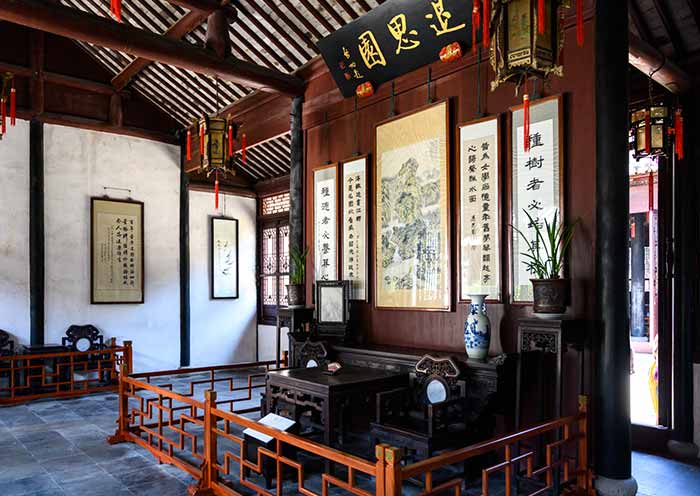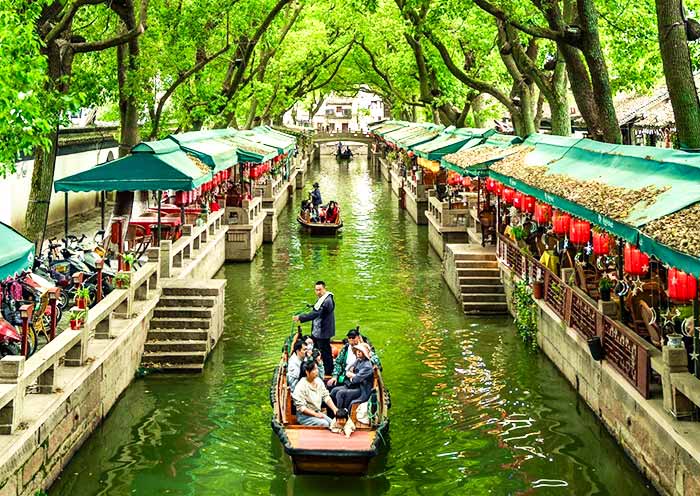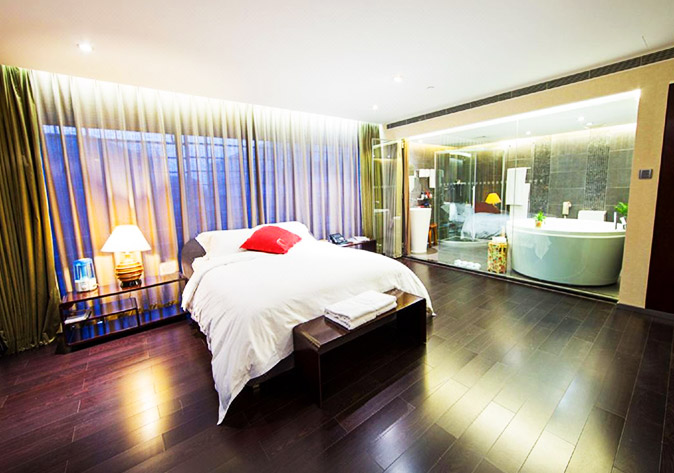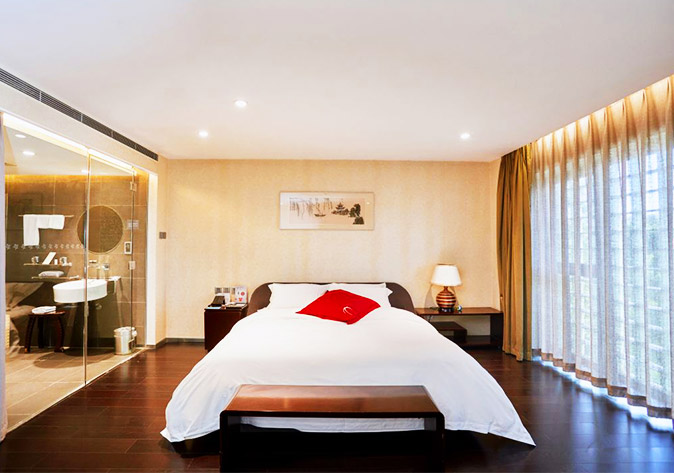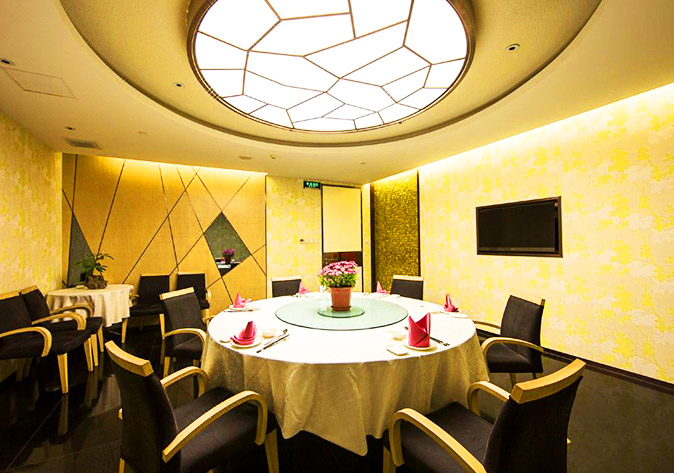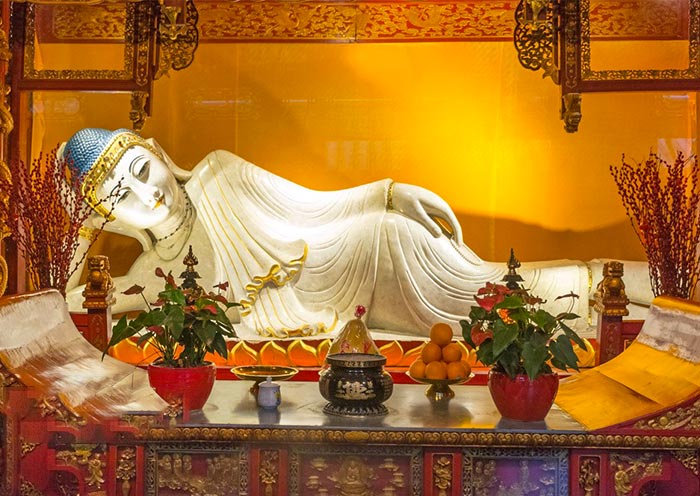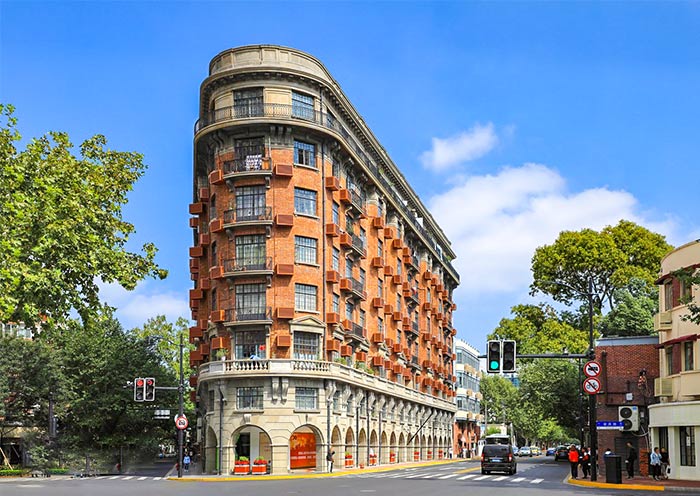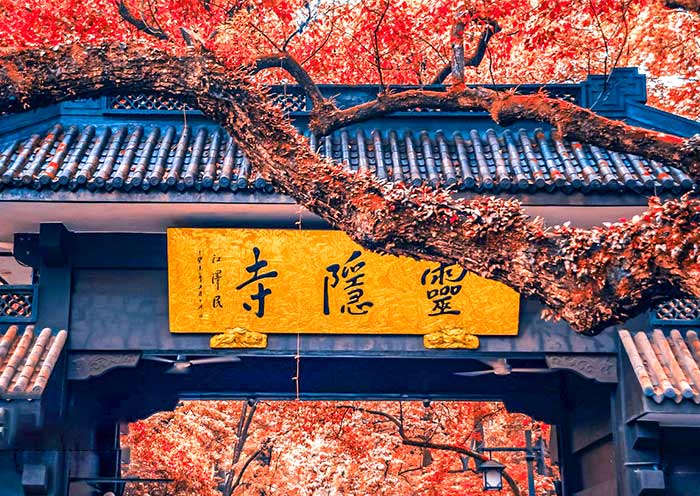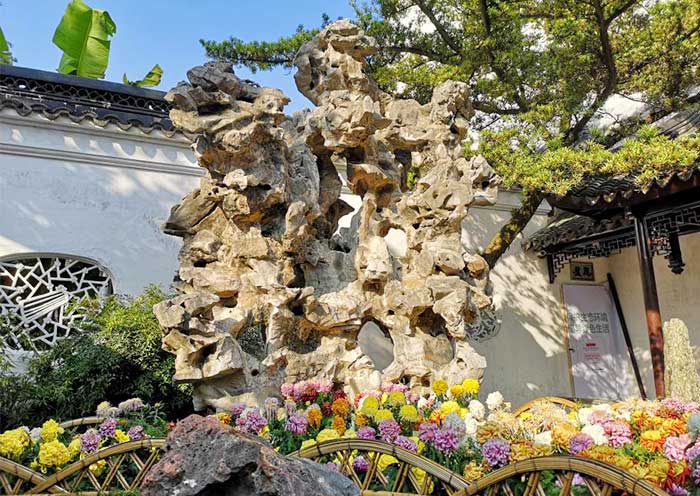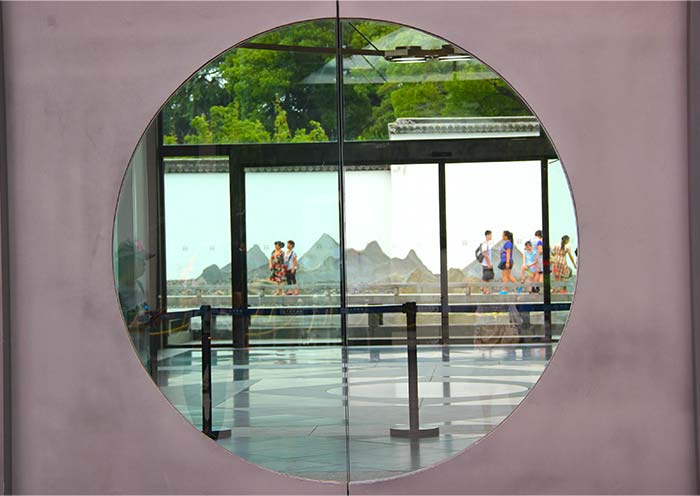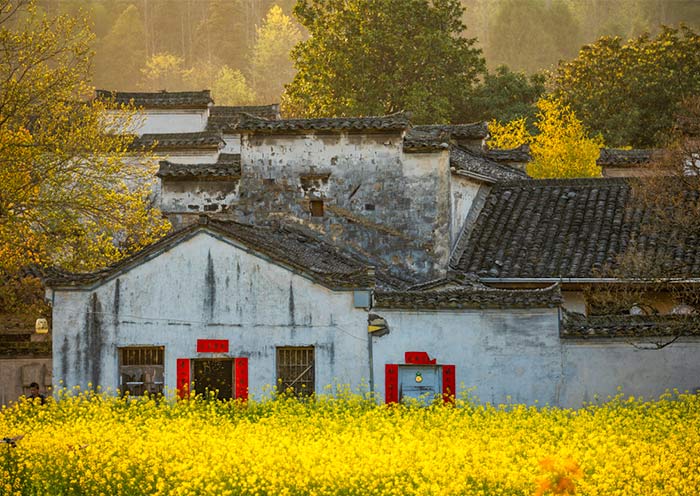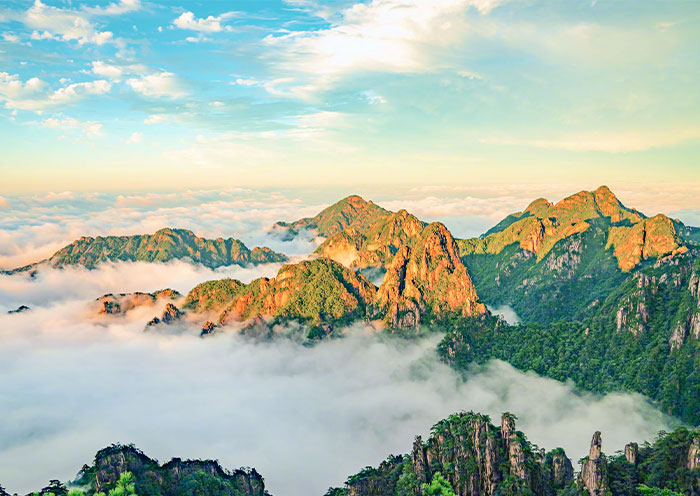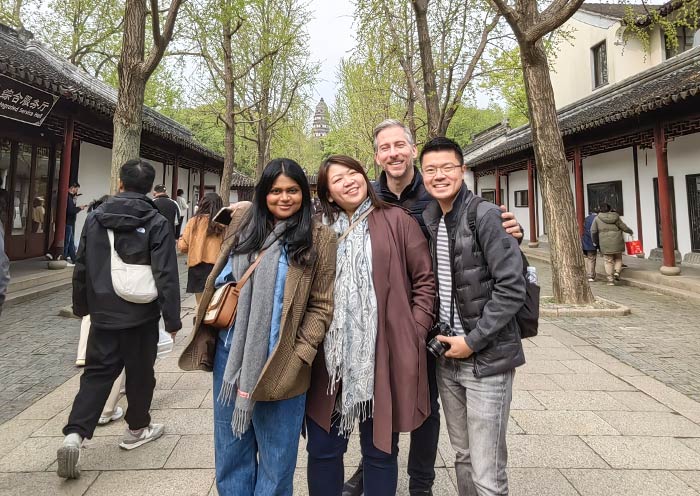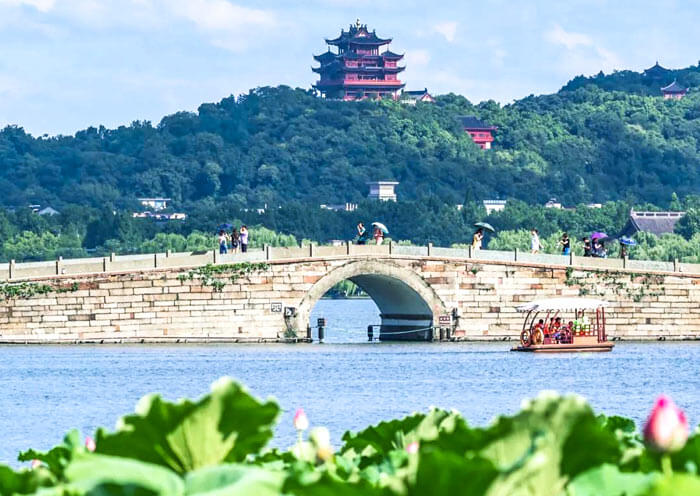In the morning, you will arrive at Hangzhou bullet train station to catch a high speed train to Suzhou (approximately 1.5-2 hours). Welcome to Suzhou, renowned as the "City of Gardens" and the "Venice of the East", where an elegant and picturesque atmosphere greets you at every turn.
Your first stop is a brief visit to the Suzhou Garden Museum to gain a clear understanding of the Classical Gardens of Suzhou, which consist of nine gardens in the historic city of Suzhou listed as a UNESCO World Heritage Site. Then, continue your discovery at the serene Humble Administrator’s Garden, the largest garden in Suzhou, which is considered one of the greatest examples of quintessential Chinese landscape design.
Built in 1509, Humble Administrator's Garden is the finest example of a Ming Dynasty garden. Retired magistrate Wang Xianchen created this masterpiece over 16 years. He named it to reflect his desire for a humble life after public service. The garden has three sections: the expansive Eastern Garden, the distinguished Central Garden, and the exquisite Western buildings. With its ponds, rockeries, trees, and pavilions, the garden unveils scenic views like an unrolling scroll painting. As you meander along the circular route, be impressed by the intimate courtyards, elegant architectural details, and majestic artisan stonework while immersing yourself in the gorgeous poems depicted in each architecture. These poems reflect the notable attitudes of the owners. The Orchid Snow Hall, the main hall in the eastern part of the garden, gets its name from Li Bai's poem verse "Alone between heaven and earth, the clear breeze scatters the orchid snow" (独立天地间,清风洒兰雪), implying a pure and lofty character. Walking along the path, you will come to the House of Sweet-Scented Osmanthus, the main building in the garden, named after Zhou Dunyi's essay "In Love with the Lotus" (香远益清,亭亭净植), implying noble and elegant virtues. Overlooking the fan-shaped "With Whom Shall I Sit in the Pavilion", you will evoke the atmosphere of Su Dongpo's poem "With whom shall I sit? The bright moon, the fresh breeze, and I" (与谁同坐?明月清风我). Continuing your journey, you will reach Jianshan Hall, named after the poem by Tao Yuanming "Gathering chrysanthemums by the eastern hedge, I contentedly gaze upon the southern mountains" (采菊东篱下,悠然见南山). Every step in this poetic atmosphere is accompanied by architecture that tells a story through its connection to a poem.
Important tips for appreciating and photographing Suzhou Gardens:
1. Begin by observing the overall layout and composition of the garden from the map. This will give you an impression of the main themes and designs.
2. Take a tour of the garden with an open mind to appreciate its essence. Pay attention to the use of spatial techniques like borrowed scenery, facing scenery, leaked scenery etc.
3. Notice the architecture - its layout, forms, and how it complements other elements like plants, rocks, water. Understand the cultural significance behind the designs.
4. Spend time comprehending the mood and emotions conveyed through the names of the buildings and their accompanying couplets.
5. Look out for scenic views that capture the seasonal beauty of the garden.
6. Frame and photograph interesting perspectives using the garden's structures and scenery.
To delve into over 2500 years of history, you will visit Suzhou Museum, boasting remarkable architecture and impressive collections. Designed by the world-renowned architect I.M. Pei, this museum seamlessly blends classical and modern elements, preserving the traditional white powdered walls of Suzhou to evoke a classical ambiance while exuding a contemporary sensibility. The museum's distinct contours, strong geometry, and captivating silhouettes are truly awe-inspiring. As you step into the museum, you will find yourself enchanted by the beauty that filters through windows and dances with the rays of light. The scenery constantly evolves, creating a dynamic and captivating experience. While exploring the museum's halls, you will encounter a rich display of local Suzhou crafts and cultural artifacts from the Wu region. Among the treasures showcased is the renowned Sword of King Yu of Wu, along with other exquisite pieces like lacquerware, bamboo carvings, jade carvings, gold bricks, clay sculptures, and musical instruments.
In the afternoon, you will visit Lion Grove Garden, where renowned architect I.M. Pei spent his childhood. Built in the Yuan Dynasty by a Zen Buddhist monk, this garden is older than the Humble Administrator's Garden. The garden derives its name "Lion Grove" from the presence of over 500 lifelike and vivid lion-shaped rockeries, which have made it famous. The Qianlong Emperor, renowned in the Qing Dynasty (1616-1912) for his exceptionally long reign, visited the Lion Grove Garden six times and personally inscribed the characters "Zhen Qu" meaning "true delight". Inspired by the garden's artificial rockeries, he commissioned the construction of similar structures in the Yuanmingyuan (Old Summer Palace) and the Chengde Mountain Resort. Explore this rock labyrinth kingdom with its nine winding stone pathways and 21 cave openings, and be captivated as you gaze in awe at the manmade limestone mountains adorned with caves and formations inspired by the nearby Taihu Lake. Marvel at the multi-story rock maze rising nearly 23 feet high. Observe the dazzling pavilions and learn the backstory behind each one. Don't miss the majestic waterfall and ancient trees that also dot the grounds. Wandering this fascinating fusion of nature and architecture will allow you to appreciate why it captivated emperors and inspired young I.M. Pei.
After that, let’s take a traditionally decorated boat along the Pingjiang Road Canal for about 30-40 minutes. This boat tour allows you to experience the romance of "When you come to Suzhou, every household lives along the river," immersing yourself in the relaxed pace of life that has defined Suzhou for centuries.
Next, enjoy a leisurely stroll down Shantang Street, reputedly "Suzhou's No. 1 Ancient Street," with over 1,100 years of history. As you explore, you'll discover various shops, temples, shrines, pagodas, memorial archways, guild halls, mansions, bridges, and traditional Chinese architecture. Be sure to visit the Bai Juyi Memorial Hall to see artifacts and learn about this prominent historical figure who built the street. While wandering, don’t forget to try local Suzhou snacks for an authentic taste of the region.
Option for Suzhou Evening Tour:
Night Performance at Master of the Nets Garden (夜游网师园;19:30-22:00)
The Master of the Nets Garden is celebrated for its small yet elegant design. Regarded as the pinnacle of small-scale gardens in Suzhou, the Master of the Nets Garden is considered to be the most exquisite of Suzhou's famed classical gardens. The Master of the Nets Garden comes alive at night with lively dance, music, and opera performances staged amidst the garden's elegant architecture. Follow your guide from pavilion to pavilion and immerse yourself in eight local performing arts specialties, including Kunqu Opera (昆曲) and Pingtan (评弹Suzhou-style ballad singing), as well as folk dance, traditional Chinese instrumental music, and even comedy. After the performance, feel free to explore the garden in a new light. (Tip: The performances take place from 19:30 to 22:00. from mid-Mar. to mid-Nov.)

